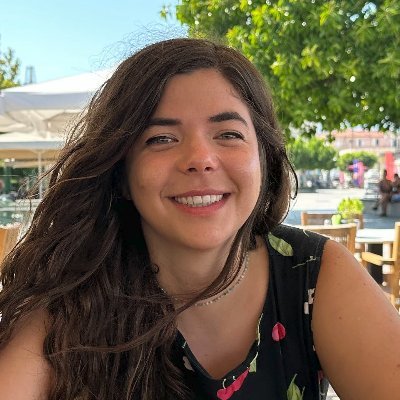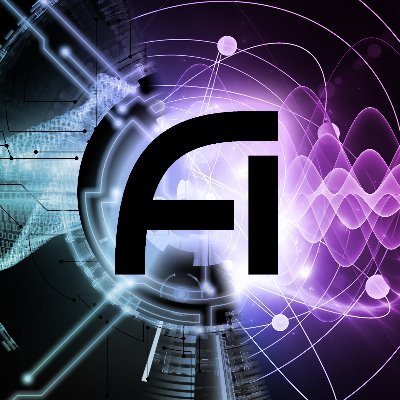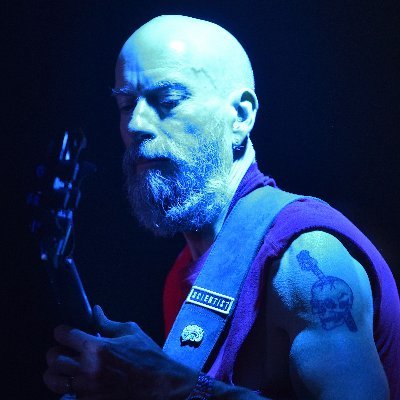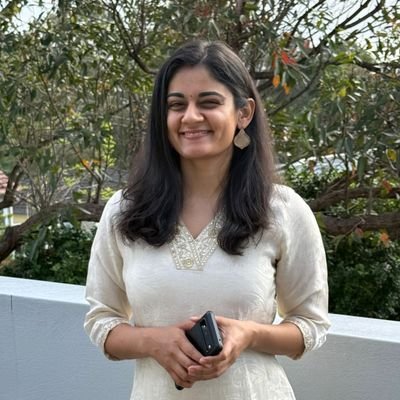
Andy Keller
@t_andy_keller
Followers
4K
Following
2K
Media
44
Statuses
265
Postdoctoral Fellow at The Kempner Institute at Harvard University -- Somewhere between Brains & Bits. PhD at UvA, Intern @ Apple MLR, Prev @ Intel AI & Nervana
Joined March 2014
Why do video models handle motion so poorly? It might be lack of motion equivariance. Very excited to introduce: Flow Equivariant RNNs (FERNNs), the first sequence models to respect symmetries over time. Paper: https://t.co/dkk43PyQe3 Blog: https://t.co/I1gpam1OL8 1/🧵
8
73
397
Super excited to share that my Master’s project, “Convolutional architectures are cortex-aligned de novo,” has been published in Nature Machine Intelligence! https://t.co/Zmy1XwymFB w/ @EricElmoznino @michaelfbonner
3
14
32
Do you want to understand how language models work, and how they can change language science? I'm recruiting PhD students at UBC Linguistics! The research will be fun, and Vancouver is lovely. So much cool NLP happening at UBC across both Ling and CS! https://t.co/IxKvy4Um1I
14
84
404
There’s lots of symmetry in neural networks! 🔍 We survey where they appear, how they shape loss landscapes and learning dynamics, and applications in optimization, weight space learning, and much more. ➡️ Symmetry in Neural Network Parameter Spaces https://t.co/vzpKp3MvkI
8
45
230
Hidden Spirals Reveal Neurocomputational Mechanisms of Traveling Waves in Human Memory https://t.co/6ZEu1QZbvn
#biorxiv_neursci
biorxiv.org
Traveling waves are neural oscillations that progressively propagate across the cortex in specific directions and spatial patterns, however, their underlying mechanisms remain elusive. To probe their...
0
8
32
Join us today (Friday, October 24) at 1:00pm ET for our next IAIFI Colloquium featuring @t_andy_keller (Harvard University Kempner Institute): Flow Equivariance: Enforcing Time-Parameterized Symmetries in Sequence Models. Watch on YouTube: https://t.co/Syh6lxud2I
0
1
3
As promised after our great discussion, @chaitanyakjoshi! Your inspiring post led to our formal rejoinder: the Platonic Transformer. What if the "Equivariance vs. Scale" debate is a false premise? Our paper shows you can have both. 📄 Preprint: https://t.co/kd8MFiOmuG 1/9
After a long hiatus, I've started blogging again! My first post was a difficult one to write, because I don't want to keep repeating what's already in papers. I tried to give some nuanced and (hopefully) fresh takes on equivariance and geometry in molecular modelling.
1
28
93
🕳️🐇Into the Rabbit Hull – Part II Continuing our interpretation of DINOv2, the second part of our study concerns the geometry of concepts and the synthesis of our findings toward a new representational phenomenology: the Minkowski Representation Hypothesis
5
69
382
🕳️🐇Into the Rabbit Hull – Part I (Part II tomorrow) An interpretability deep dive into DINOv2, one of vision’s most important foundation models. And today is Part I, buckle up, we're exploring some of its most charming features.
10
121
643
Appearing soon: State-space trajectories and traveling waves following distraction, J of Cog. Neuro., in press. A direct link between spiking patterns moving through subspace and traveling waves propagating across the cortex. Preprint: https://t.co/8bbQTaE8Ko
#neuroscience
biorxiv.org
Cortical activity shows the ability to recover from distractions. We analyzed neural activity from the prefrontal cortex (PFC) of monkeys performing working memory tasks with mid-memory-delay...
3
16
87
New preprint alert 🧠 Ever wondered how the cortex and hippocampus communicate during health and what changes during disease? With @DrBreaky and an amazing team, we built the first geometry-aware model of cortico-hippocampal interactions to answer this. [ https://t.co/oyC1HZKqvQ]
biorxiv.org
Functional interactions between cortex and hippocampus play a central role in cognition and are disrupted in major neurological disorders, but the mechanisms underlying coordinated cortico-hippocam...
4
28
75
New paper on covariant #neuromorphic networks! We're connecting decades of work in computer vision with decades of work in spiking networks to present spatio-temporal spiking processing. https://t.co/uFlA3I6BuI
2
8
34
Incredibly rigorous and precise study of the one of the most fundamental visual processing capabilities of deep feedforward neural networks, contour integration -- just great science. Kudos Fenil! 👏
🧵 Can a purely feedforward network — with no recurrence or lateral connections — capture human-like perceptual organization? 🤯 Yes! Especially for contour integration, and we pinpoint the key inductive biases. New paper in @PLOSCompBiol with @talia_konkle & @grez72! 1/24
1
2
29
Great thread! Very excited to see the 'more' that comes next!
In a classic study of "mental rotation", Shepard and Metzler (1971) found that the time to compare two 3D cube-made objects was proportional to their angular difference. But *what is going in the brain* during this process? 🔗 Metzler & Shepard (1971): https://t.co/fbtMnbPZR0
0
0
7
Humans largely learn language through speech. In contrast, most LLMs learn from pre-tokenized text. In our #Interspeech2025 paper, we introduce AuriStream: a simple, causal model that learns phoneme, word & semantic information from speech. Poster P6, Aug 19 at 13:30, Foyer 2.2!
8
33
194
Looking forward to seeing @mozesjacobs give a short talk on this at CCN (@CogCompNeuro) in ~30mins! Watch the recorded livestream below or come by poster C171 to say hi! Stream:
In the physical world, almost all information is transmitted through traveling waves -- why should it be any different in your neural network? Super excited to share recent work with the brilliant @mozesjacobs: "Traveling Waves Integrate Spatial Information Through Time" 1/14
0
5
40
#KempnerInstitute research fellow @t_andy_keller and coauthors Yue Song @wellingmax and Nicu Sebe have a new book out that introduces a framework for developing equivariant #AI & #neuroscience models. Read more: https://t.co/fc92JnImeD
#NeuroAI
kempnerinstitute.harvard.edu
Humans have a powerful ability to recognize patterns in a dynamic, ever-changing world, allowing for problem-solving and other cognitive abilities that are the hallmark of intelligent behavior. Yet...
0
7
32
Equivariance meets RNNs. An exciting research direction!
Why do video models handle motion so poorly? It might be lack of motion equivariance. Very excited to introduce: Flow Equivariant RNNs (FERNNs), the first sequence models to respect symmetries over time. Paper: https://t.co/dkk43PyQe3 Blog: https://t.co/I1gpam1OL8 1/🧵
0
2
23
New in the #DeeperLearningBlog: #KempnerInstitute research fellow @t_andy_keller introduces the first flow equivariant neural networks, which reflect motion symmetries, greatly enhancing generalization and sequence modeling. https://t.co/B1YVESrRcR
#AI #NeuroAI
kempnerinstitute.harvard.edu
Sequence transformations, like visual motion, dominate the world around us, but are poorly handled by current models. We introduce the first flow equivariant models that respect these motion symmet...
0
4
16
Huge thanks to all my friends and advisors who helped me develop this work. Specifically, this paper would never have happened without @wellingmax's guidance. See the blog for an intro, and the paper for all the proofs! Blog: https://t.co/I1gpam1OL8 Code:
github.com
Official repository for the paper "Flow Equivariant Recurrent Neural Networks" - akandykeller/FERNN
0
1
29
Excitingly, I also think that FERNNs give us a formal bridge between spatiotemporal neural dynamics and equivariance. Brains are recurrent, embodied sequence learners; cortical traveling waves may be doing exactly this kind of frame shift. See prior work:
Traveling waves are known to exist throughout the brain in a variety of forms — there are many hypotheses, but their exact computational role is debated. Together with @wellingmax we built an RNN which exhibits traveling waves to see what it could do. Here’s what we think: 1/7
1
0
12




















